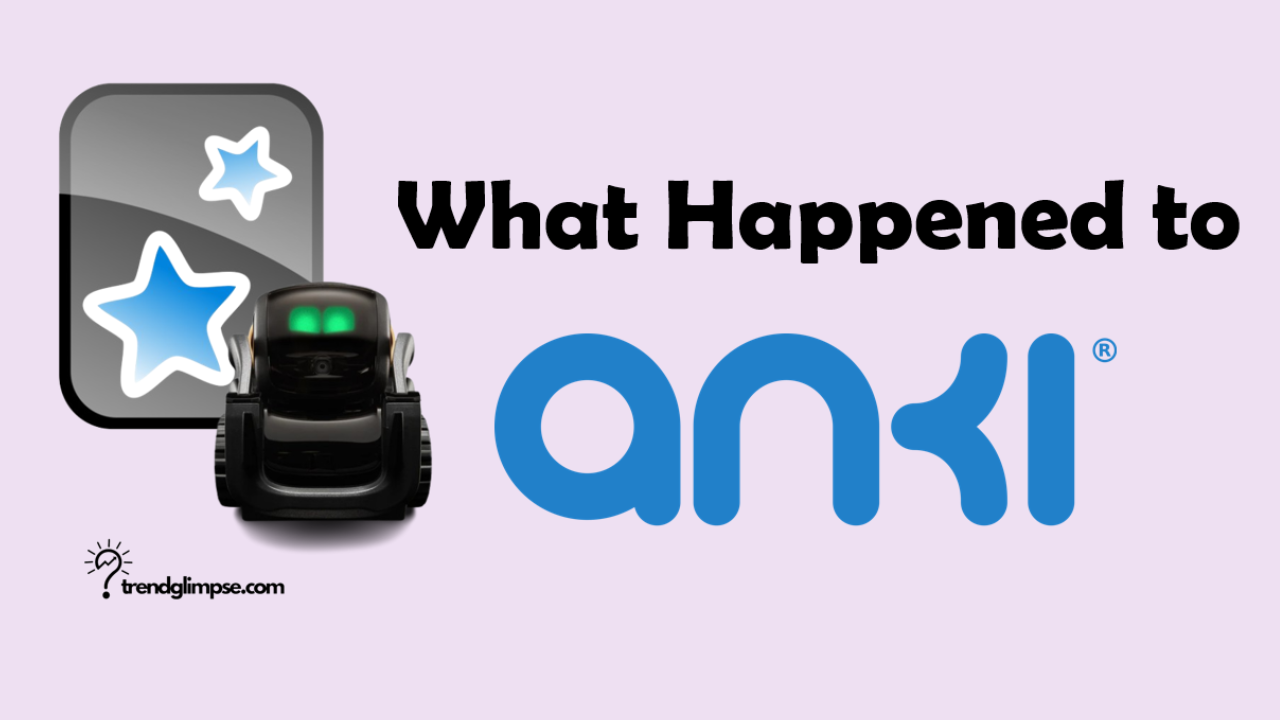An Overview of Anki
Anki was a pretty cool company back in the day. Founded in 2010, they made these little consumer robots and artificial intelligence toys. Their first product, Anki Drive, was a bot car racing game you could play by yourself or with friends. The tiny smart cars would zoom around custom race tracks, kind of like a video game but in real life.
People geeked out over it – the toy cars used artificial intelligence to make moves and react in races. And they kept updating the AIs and making new ones so the gameplay stayed fresh. Soon Anki was coming out with all sorts of gizmos, from cute little robots like Cozmo to a toy robot forklift you could play with. These bots were meant more for entertainment than being useful, but they showed how far consumer robot tech had come.
Funding and hype wasn’t hard to come by either. Anki pulled in almost $200 million in VC money over the years. Those little robots were hot tickets for a while, especially with kids and geeks like me who dreamed of real-life robot buddies one day. For a moment it felt like Anki was leading the way into some fun sci-fi future.
But I guess those hopes outpaced actual sales and profits. Making cute toy robots is pricey after all. Even with all that funding and interest, Anki apparently struggled behind the scenes. They had big plans to keep expanding the products and AI features, but didn’t have the runway to see it through.
Peak Popularity of Anki
Anki reached the peak of its popularity in the mid-late 2010s when it truly dominated as a study tool leveraged by millions of students around the world. Though it had gradually gained users for years since its release in 2010, 2015-2018 is considered the app’s golden age.
Several factors aligned to make Anki an essential productivity tool for learning during this stretch. As a powerful, free spaced repetition flashcard program, its methodology for retaining information resonated perfectly with the student and professional demographic at the time. People were drawn to the ease of creating customizable digital flashcard decks which made studying more streamlined. And Anki offered convenience by operating seamlessly across desktop and mobile.
Word spread rapidly about the app in online study communities, where current students heaped praise on Anki as transformative for acing tests. This created a snowball effect, making it the must-have tool for academic rigor. Soon, recommending and sharing high-quality pre-made Anki decks became common practice. Some enterprising students even charged money for premium Anki decks covering popular university courses.
Anki became almost ubiquitously relied upon by medical students in particular during the late 2010s, allowing them to memorize staggering amounts of material in ways not otherwise possible. No medical student’s study arsenal was complete without Anki firing on all cylinders. Across many universities, it was unofficially part of the curriculum!
The decision to make Anki open source in 2016 enabled continuous improvements by developers globally. Over the next two years, exciting new features would further boost Anki’s capabilities. Syncing across devices, GUI upgrades, tagging and filtering options powered Anki to its zenith, where it was downloaded over 3 million times in 2018 and sat firmly as one of the top educational apps. For those years, it felt like half the student population had a Anki deck permanently open for studying!
Anki’s Challenges and Stumbling Blocks
Anki’s journey began with promising prospects and significant investments. However, the path to profitability in the highly competitive tech industry proved to be challenging. Despite successful product launches and a dedicated customer base, the company found itself facing financial hurdles. The need for constant innovation and the capital-intensive nature of robotics research strained Anki’s financial resources.
Simultaneously, competition exploded. Apps like Quizlet, Brainscape and RemNote introduced more intuitive and flashing UIs with advanced options tailored to student needs. Unlike these well-funded startups, Anki looked stale tech-wise in comparison. Students accustomed to slick consumer apps found Anki’s UI dated and barebones. The competitors seemed laser-focused on the studying use case while prioritizing user experience.
The company really staked their future though on their next product – Anki Vector. Launched in 2018 after years in development, Vector was essentially a real-life Wall-E – a cute, tiny home robot with advanced AI and voice controls. The hope was that Vector would introduce consumer robotics to the mass market. Initial reviews were somewhat positive and sales seemed decent, although falling short of projections.
This was when the first troubling signs began to emerge. Despite over $200 million in total funding, Anki was burning through cash at an alarming rate. Their high-tech products required constant R&D investments. And the consumer robotics market was proving tricky to crack. Cutesy robots make for great demos and press releases, but consumer appetite proved lacking. Costs were adding up and new rounds of funding were becoming harder to secure.
By early 2019, Anki had only a few months of runway left and began missing bill payments to contractors and consultants. Drastic layoffs and cost-cutting measures were implemented, but time had run out. In April 2019, Anki shocked the tech world by abruptly closing its doors and declaring bankruptcy. Their last ditch hope of selling the company was denied when terms couldn’t be met.
While Anki still retains a small base of loyal users even today, the scale of dominance it enjoyed at its peak already seems a distant memory now. It serves as a reminder of the speed of digital disruption and that no top app can afford to stand still.
Anki’s Closure Announcement
Anki’s closure in 2019 came as an unfortunate surprise to many in the robotics community. The company had been a rising star, wowing consumers with sophisticated toy robotics and raising over $200 million in funding from top Silicon Valley investors. However, it seems Anki struggled with sustainability.
On April 29, 2019, Anki’s roughly 200 employees gathered at the company’s San Francisco headquarters expecting a routine Monday morning meeting. Instead, Anki co-founder and then-CEO Boris Sofman announced that the company was immediately laying off its staff and closing up shop.
In his remarks, Sofman shared that Anki had been unable to secure another round of funding to keep the business going. Ultimately the existing investors decided not to provide more financing.
The same week, Sofman told reporters Anki had struggled to transition from selling mostly lower-priced toys to higher-end robotics for consumers and enterprises. The company had accumulated debt and losses were mounting. Revenue couldn’t catch up with expenses in time it seems.
Within days of the meeting, Anki’s products were removed from store shelves and the company began winding down operations. It marked an abrupt end to a once-promising consumer robotics pioneer after nearly 10 years in business. The rapid shutdown left many customers, developers and partners surprised and disappointed to see Anki go.
Analyzing the Factors Behind Anki’s Downfall
Anki’s crash seemed sudden, but there were likely warning signs. As an innovative robotics startup, Anki was bound to face some inherent challenges. Unfortunately, those challenges proved insurmountable. When we look closer, a few key factors stand out that led to Anki’s demise.
Company Ran Out Of Money
Firstly, and perhaps most fundamentally, Anki seemed to run out of operating capital. Like many hardware startups, Anki required huge upfront investments in R&D and manufacturing, but then struggled to fund ongoing operations as the cash burn rate climbed. After nearly $200 million in funding, Anki found itself in need of another financing round. But investors did not come through.
Other Startups Closing Business In The Robotics Industry
That failure to secure more financing was likely intertwined with troubles across the robotics startup space. Anki wasn’t alone—other consumer robotics companies were struggling around the same time. Investors seemed increasingly bearish on bankrolling complex hardware that had yet to prove market viability. So as risk appetite diminished, Anki got left out in the cold.
Little Too Careless With Its Spending
On top of that, reports indicated that Anki had been comparatively careless with its spending. The lavish company culture and hefty senior executive salaries hinted at operations leaning towards unsustainability. Cost discipline is difficult but necessary in capital-intensive industries. Anki trimmed some fat in its final year, but it was ultimately too little too late.
Very Complex And Unsustainable Manufacturing Process
Drilling down further, manufacturing and pricing issues likely piled on the pressure. With sophisticated consumer robots, R&D and production processes tend to be extraordinarily complex. Each Anki bot was reportedly comprised of over 1,000 components sourced globally. That sort of complexity gets very costly—making sustainability dubious at Anki’s target mass market price points.
Sadly, despite innovative thinking, Anki couldn’t overcome key cost and funding obstacles. The timing wasn’t right for a thriving consumer robotics company. But hopefully we’ll see attempts in the future as technology advances and consumers grow readier to welcome robots into the home. If there are lessons to take from Anki’s downward spiral, future startups would be wise to heed them.
The consumer robotics sector was facing a downturn, with other companies like Jibo and Kuri shutting down. This made it difficult for Anki to find new investors or partners to help it stay afloat.
Current Status of Anki
Digital Dream Labs acquired Anki’s assets in 2020, though not its full technology and products. They have since rehired over 30 former Anki employees to revive Vector production. While Anki as a company has effectively shut down, its technology and IP live on through Digital Dream Labs, as they work to rebuild consumer confidence and bring back Vector and other Anki robots.

I have always been fascinated by the inner workings of companies and industries. So I decided to study business to explore it more. My goal is to take all my research and turn it into cool stories that give people a better understanding of the business world.

